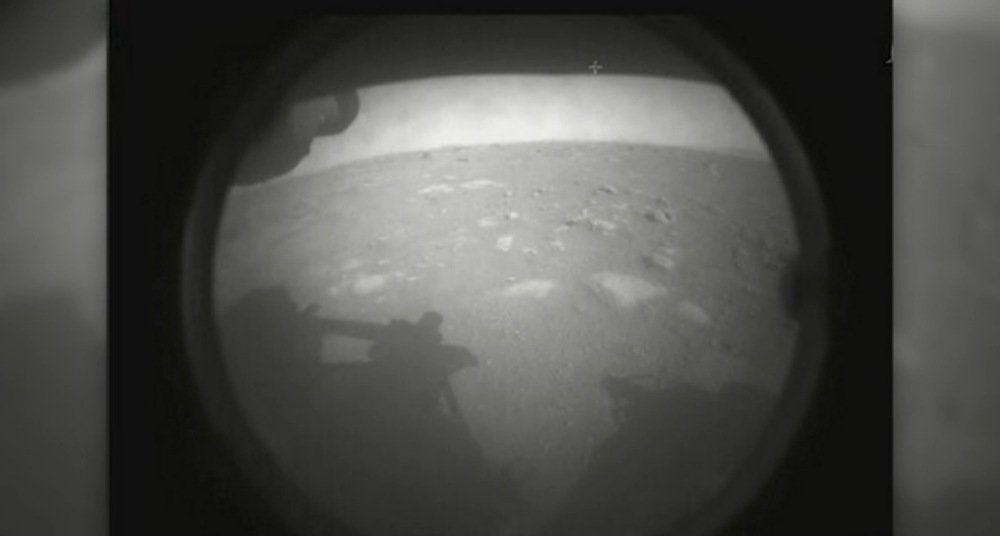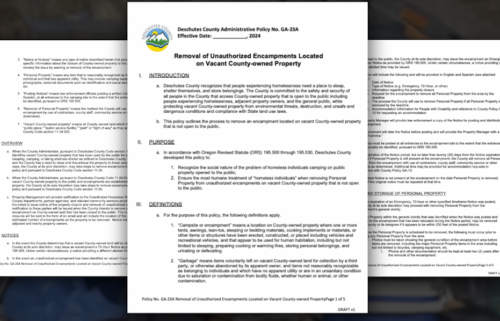Perseverance rover has successfully landed on Mars

NASA’s Perseverance rover has safely landed on Mars after its 292.5 million-mile journey from Earth, the agency confirmed.
The rover sent back its first images of the landing site immediately after landing.
The rover has been on a nearly 300 million-mile journey since it left Earth more than 6 months ago.
Humanity’s love affair with Mars is an enduring one, full of wonder about the possibility of life on this mysterious neighboring planet. This historic mission can search for evidence that could give us the answer.
Perseverance is full of firsts. The search for signs of ancient life on Mars. The first helicopter fly on another planet. The first recordings of sound on the red planet.
NASA’s most sophisticated rover to date has a packed agenda for the next few years.
The rover will explore Jezero Crater, the site of an ancient lake that existed 3.9 billion years ago, and search for microfossils in the rocks and soil there. Follow-up missions will return samples of this site collected by Perseverance to Earth by the 2030s.
Along for the ride with Perseverance is an experiment to fly a helicopter, called Ingenuity, on another planet for the first time.
Once the rover has landed on Mars, you can follow its journey using an interactive map. Any raw images sent back by the rover this week and going forward will also be immediately available to the public on NASA’s site.
Landing on Mars: ‘7 minutes of terror’
Perseverance is NASA’s ninth landing on Mars and the agency’s fifth rover. In order to land, it had to go through the infamous “seven minutes of terror.”
The one-way time it takes for radio signals to travel from Earth to Mars is about 11 minutes, which means the seven minutes it takes for the spacecraft to land on Mars occurs without any help or intervention from NASA teams on Earth.
This rover is the heaviest NASA has ever attempted to land, weighing in at over a metric ton.
The spacecraft hit the top of the Martian atmosphere moving at 12,000 miles per hour and had to slow down to 1.7 miles per hour seven minutes later when the rover softly landed on the surface.
The spacecraft’s heat shield endured peak heating of 2,370 degrees Fahrenheit.
Perseverance targeted a 28-mile-wide ancient lake bed and river delta, the most challenging site yet for a NASA spacecraft landing on Mars. Rather than being flat and smooth, the small landing site is littered with sand dunes, steep cliffs, boulders and small craters. The spacecraft has two upgrades — called Range Trigger and Terrain-Relative Navigation — to navigate this difficult and hazardous site.
Range Trigger told the 70.5-foot-wide parachute when to deploy based on the spacecraft’s position 240 seconds after entering the atmosphere. After the parachute deployed, the heat shield detached.
The rover’s Terrain-Relative Navigation acts like a second brain, using cameras to take pictures of the ground as it rapidly approaches and determines the safest spot to land. It can shift the landing spot by up to 2,000 feet, according to NASA.
The back shell and parachute separated after the heat shield was discarded. The Mars landing engines, which include eight retrorockets, fired to slow the descent to 1.7 miles per hour — or the average walking speed of a human.
Then, the famed sky crane maneuver that landed the Curiosity rover occurred. Nylon cords lowered the rover 25 feet below the descent stage. After the rover touched down on the Martian surface, the cords detached and the descent stage flew away and landed at a safe distance.
NASA’s Mars Reconnaissance Orbiter relayed data from the rover throughout landing.
The orbiters around Mars can also send back any images, either taken by the rover or the orbiters, to Earth.
The agency’s Odyssey orbiter will fly over the landing site and communicate with the rover to confirm its health about 7:27 p.m. ET, according to NASA. Then, the European Space Agency’s ExoMars Trace Gas Orbiter will also do a check-in with Perseverance and return any images and data to Earth at 9:36 p.m. ET.
The mission: What the rover will do
Now that the rover has landed, Perseverance’s two-year mission will begin. First, it will go through a “checkout” period.
Perseverance will capture images of its surroundings and send them back, unfold its “head” and take more pictures while going through some health checkups with engineers.
Teams on Earth will go through a month of inspections, software downloads and preparations for roving.
The helicopter team will make sure Ingenuity is safe, healthy and ready to fly, “a true extraterrestrial Wright Brothers moment,” according to Thomas Zurbuchen, associate administrator for NASA’s Science Mission Directorate.
Over a process that takes about 10 days, the rover will drop the helicopter on the surface of Mars and roll away from it. The little 4-pound helicopter will have to survive frigid nights on Mars, keep itself warm and charge itself using solar panels. Then, it will be ready for its first flight, which will last about 20 seconds.
“The Ingenuity team will be on the edge of our seats with the Perseverance team on landing day,” said MiMi Aung, the Ingenuity project manager. “We can’t wait until the rover and the helicopter are both safely on the surface of Mars and ready for action.”
Perseverance will search for evidence of ancient life and study Mars’ climate and geology and collect samples that will eventually be returned to Earth by the 2030s.
“Perseverance’s sophisticated science instruments will not only help in the hunt for fossilized microbial life, but also expand our knowledge of Martian geology and its past, present, and future,” said Ken Farley, project scientist for Mars 2020, in a statement.
The path Perseverance will traverse is about 15 miles long, an “epic journey” that will take years, Farley said. What scientists could discover about Mars, though, is worth the journey. To accomplish its goals, Perseverance will drive a little less than 0.1 mile per hour, three times faster than previous rovers.
Perseverance also carries instruments that could help further exploration on Mars in the future, like MOXIE, the Mars Oxygen In-Situ Resource Utilization Experiment. This experiment, about the size of a car battery, will attempt to convert Martian carbon dioxide into oxygen.
Not only could this help NASA scientists learn how to produce rocket fuel on Mars, but also oxygen that could be used during future human exploration of the red planet.



